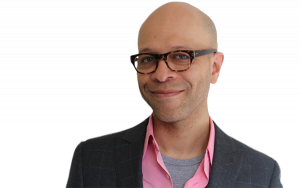Bradford: Why Nikole Hannah-Jones’s Faith in Public Schools Loses Sight of Some Harsher Truths

Her latest piece, “Have We Lost Sight of the Promise of Public Schools?” is, however, the dancing of La La Land in a world filled with Moonlight’s hardscrabble reality. It misses critical questions about the nature of public institutions as they pertain to those who are disenfranchised by said systems — and it presupposes a beneficence in collaboration through “public” means that is itself problematic given the country’s history.
At the root of this is the structure of the public schools themselves, because they were never truly open to all — nor were they meant to be. I chafe when the pronoun “our” is used to describe “our public school” system because there have only been “our” public schools in America when the children of the people having the conversation actually attend the same school. When that is not the case, the proper words are “yours” and “mine.” And those words derive their use based on where we live, our relative affluence, or our ability to assert political or financial pressure on the governance of the local public school system.
What does this wordsmithing look like in practice? Rich person in an elite district with many college-educated neighbors? “Yours.” Low-income community of color with poor policing? “Mine.” Inequitable delivery of supposed “shared” public access and opportunity? A given.
Jones’s essay outlines something inherently altruistic and liberating about the nature of public institutions and public schools, but it’s something which may or may not be true. And that view sidesteps how liberation or freedom of any kind are normally acquired, and where public institutions — and traditional public schools — exist in that continuum.
If you talk to small-government conservatives, you’ll hear the axiom “our rights come from God.” And in that is the notion that power is vested in the individual and conferred to the public via our institutions. Whether that power is distributed equally is a different issue. But the animating premise of the individual’s permission empowering the state, versus the state and its public institutions delegating power to the individual, matters greatly.
Here again we need to look back to see forward. The framework of individual power and its conference on our institutions for the public good held up well when the power being conferred and the interests being served were of white, wealthy, well-read landowners and then, more broadly, white Americans of different stripes. The chemistry of that interaction has bonded with the DNA of “the public” and “public schools” so fundamentally that it’s difficult to remember when the cross-pollination happened at all.
The offspring of that creation wasn’t always benign, and Jones alludes to it in her discussion of vouchers. Public schools are also creatures of the political hegemony of the times, and they occasionally prove ravenous in their desire to assimilate or eliminate competing values and differences. You can look at the history of the nation’s Blaine amendments, or the historic Pierce v. Society of Sisters, where the governor of Oregon sought to make public schooling compulsory to see this at work. Many Catholic Americans look at the public nature of public schools and see a legacy of bigotry and ostracism. Even today it remains difficult to hold the notion of shared civic ideals in one hand with the idea that public schools — and many of the governments that run them — have tried to expel your history and beliefs from the civic square.
This point may be more sharply made for African Americans, and those of us who pursue school choice as an extension of that experience. Consider two great instances of our liberation — the ending of slavery and the passage of the Civil Rights Act. In them you find not a vesting of power in public institutions — affected over time by the pervasive chemistry of entrenched power — but a bypassing of them. In the ending of slavery and the freeing of black slaves, we don’t see power bestowed upon the public to free enslaved people; we see the right to freedom granted directly to those who were enslaved. In the Civil Rights Act, we see not a focus on the creation of equal water fountains, but on the right of the individual to drink where and when they chose. In Brown v. Board of Education, we see black children granted the right to attend public schools that excluded them based on the color of their skin even when they lived close to them.
In all of these instances, the state and the public had vital roles to play, enforcement chief among them. Given the volatility of political and racial interactions, there was an understanding that the altruism sought from these institutions (legislatures and public schools) might not exist in sufficient measure to grant the rights and freedoms these acts were meant to unleash. In President Johnson’s signing of the Civil Rights Act, for instance, we saw African Americans as individuals empowered by bypassing the state and its public institutions completely, not by assigning those same institutions the power to do the actual liberating.
Which brings us back to the cotton-candy sweetness of public schools in America. Former secretary of education Rod Paige once offered that the country’s public schools have two incredible powers. The first is mandatory attendance: you will go to school; and the second is mandatory assignment: you will go to this school.
And even though state constitutional language varies on the kind and caliber of education a child will receive under these edicts, what’s certain is this: When a public institution can conscript you into a school with a long track record of underperformance, the egalitarian spirit of education, available to all, paid for by taxpayers and free at the point of delivery, is not only not served, it is subverted. The moment the state and public schools can force you into something that will likely inhibit your ability to be free and equal in the future — as is the case with children of color in underperforming public schools — you don’t control them anymore.
Our relationship with public institutions — and schools in particular — is only in balance when the individual can wield equivalent force against them. Achieving a state of balance with the nation’s public schools rests not in the constant altruistic acquiescence to them, but the strategic self-interested defiance of them. And as a culture whose debate with public institutions is currently colored by protest and the desire to exit at every level, this dynamic isn’t just obvious, it’s critical.
In the school districts of the rich and the ruling, this equilibrium between voluntary participation and the ability to exit is the essential tension that drives performance. It’s a game for the privileged, but it’s a game they win. Unfortunately for many others, it’s not a game that is lost, it’s one that is simply unwinnable.
As in all things, there is what we want something to be and there is what something is. While many agree that our public schools can and must continue to matter for reasons both civic and cultural, a healthy skepticism and a desire to resist are equally important if a common future is to be achieved. That’s what the “public” is supposed to mean. And though the goal may be to arrive at a similar place, the experience of getting there in a variety of ways is as important, if not more, than the destination itself.
Get stories like these delivered straight to your inbox. Sign up for The 74 Newsletter

;)
